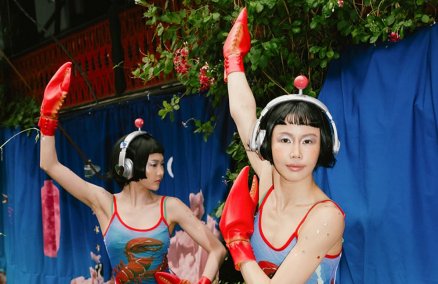Our relationship with fast fashion? It’s complicated. According to a 2017 report by YouGov, 40 percent of Thai shoppers had thrown out clothing after just one wear—nearly one in five had thrown old clothes into the bin, too. On the face of it, that’s a shockingly large number of people tossing their clothes. When you consider the impact that this sort of buy-it, bin-it mindset has on the planet, it’s devastating. A study published in research journal Nature revealed that the fashion industry’s impact amounts to 92 million tons of waste produced and 79 trillion liters of water consumed each year. Meanwhile, social enterprise C40 Cities recently noted that every person would need to limit clothing purchases to a maximum of three new items per year, while the fashion supply chain would need to reduce its waste 75 percent, to reduce global warming to 1.5 Celsius by 2100.
At the same time, Thailand is home to over 2,000 garment companies that employ between 800,000 and one million workers, according to global non-profit Fashion Revolution. The minimum wage for workers in Thailand is B308 per day, but Fashion Revolution says many workers are being paid less than that.
The industry needs reform, but some notable fast fashion brands are have made big changes recently. H&M, for example, introduced an in-store garment-to-garment recycling system called Looop in Stockholm, while Zara has developed new traceability measures to ensure fairness and transparency across its supply chain, letting consumers know where and how their garments were made.
There’s still a long way to go to fix our relationship with fast fashion, though. From making eco-friendly clothes more affordable to revamping our supply chains, these four locals explain what attracts us to fast fashion and how we can start to overhaul our shopping culture.

Nattawadee Ngamsom, fast fashion consumer
How often do you shop for new clothes?
Roughly once a week. Yes, that seems like a lot, but I always wear each item repeatedly and mix and match them in different ways.
Thoughts on fast fashion?
I think we all know that fast fashion is bad for the environment and contributes to capitalism. But not everyone can afford to buy sustainably-made clothes, because they’re oftentimes on the expensive side—I’d say that it’s a privilege to be able to buy those clothes. Plus, fast fashion is far more accessible. We can find it in every shopping mall or even on the sidewalks. On top of that, fast fashion brands offer all kinds of clothes in a range of styles.
Why do you shop for fast fashion?
As consumers, we’re all a bit guilty of purchasing unethically-produced clothing. And as a person who has a nine-to-five job with an average salary, I find that it’s near impossible for me to afford to purchase clothing at eco-friendly stores. They simply cost a lot more, although I also understand that the money we pay will often go directly to seamstresses and workers. Nowadays, fast fashion brands like H&M and Zara are trying to be more sustainable with their conscious lines, too.
Are you aware of the impact fast fashion has on the planet?
Of course, I’m aware of its effects on the environment and labor exploitation. Now I’m trying to be more mindful with my purchases, including the brands I choose to support. I’d be definitely down for supporting eco-conscious brands if they offer more wallet-friendly clothing lines.
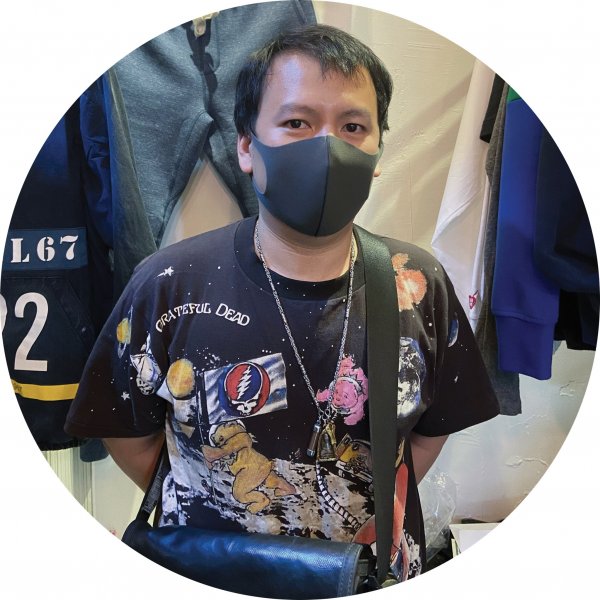
Veerapon Thongpai, fast fashion seller
How did you get into this business?
“I admit I’m not a fashionable person, but there’s something fascinating about clothing. Before I started my own business, I used to work at an entertainment company. I worked there for a year and quit because I didn’t like the way the company operated. I was unemployed for a while, until my friends introduced me to the idea of opening a clothing store. I’ve never gone back to a corporate job since then.”
Where does most of your merchandise come from?
“From various places, but most of the brands are Japanese. I handpick pieces that are different from other shops. I mean, it’s easier to sell the trendier items, but the ones that I choose are unique and intriguing. I’m not even familiar with some of the brands; I just feel like they look nice and have good-quality fabric and cutting.”
Who are your customers?
“People who are into streetwear brands but on a budget. Mostly men, from teens to those in their fifties, and a handful of women.”
Do you know if your products are made in sweatshops, and are you aware of their effect on the environment?
“I don’t know the origin of the products or how they are made. I’ve heard about labor exploitation issues and the impact on cotton farmers in countries like China, India, and Sri Lanka. If possible, they should consider growing cotton organically. Even though it costs more, it will be better [for the planet] in the long run. As for environmental issues, I’m more concerned about the products made from animal skin—it violates animal rights and it’s not necessary at all.”
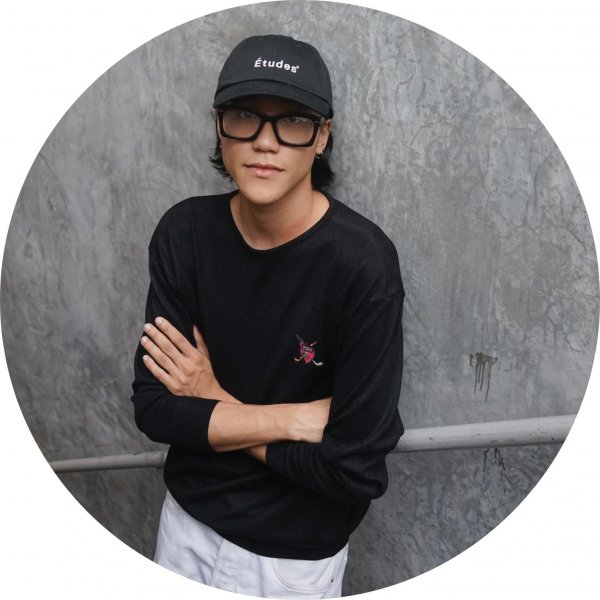
Pasin Sa-ingthong, designer of Greyhound Original
What’s your opinion of fast fashion?
The supply of clothes outnumbers our demand for them. It’s like when you cook too much and you’re left with a pile of leftovers. These days, the fast fashion industry is running at breakneck speed. One minute, a designer brand has just launched a new collection, and the next, you can see knockoff versions of that collection in the stores of some big-name retail brands, and they don’t even need buyers in the process. Not to mention brands keep coming up with new things every month. Eventually, their unsold products turn into waste.
If someone copied your designs, how would you feel? How is that going to affect your brand?
I think you can look at this situation in two different ways. On one hand, as a designer, if someone is making replicas of my products, it shows that my designs are really something and it implies that I did a great job. On the other hand, we can’t say the same from a sales aspect. It means that consumers will not have bought our products at the level we expected, since there were cheaper products available in the market.
Designer goods come with a higher price point, but what do we actually pay for?
For me, I look at the big picture of the store. Once customers walk into our stores, they’ll see the details we put in our clothing display—from color scheme to the concept. It’s like we’re creating pieces of art and the customers are buying them from us. Also, customer service. When you visit a designer boutique, well-dressed sales associates will be there to take care of you. You’re essentially paying for the design, packaging, the value of the brand, and the service that they’re offering. Plus, you’ll have a sense of pride of ownership.
Do you think consumers in Thailand are aware of the negative environmental and social effects of fast fashion?
We don’t pay enough attention to this issue as much as people in other countries. But we’re starting to see more events where people bring their old clothes to swap with others. I think our lifestyles have shifted since the pandemic, too. People have become more mindful about their clothing choices and put more focus on the practicality of the garments they buy.
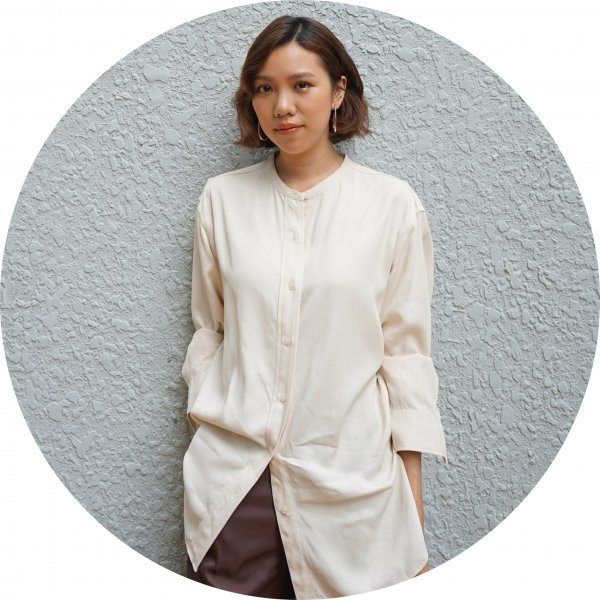
Kamonnart Ongwandee, country coordinator of Fashion Revolution Thailand
What do you think about Thailand’s relationship with fast fashion?
Thais have a tendency to consume fast fashion, because you can find it on every corner, much like fast food. It’s an industry that extracts resources and exploits labor to mass produce lower-quality merchandise without paying attention to its impact on the ecosystem and society. Fast fashion is available literally everywhere here, from shopping malls to flea markets, and most people in Thailand aren’t aware of how their clothes were made or who made them. As a result, we’re subconsciously supporting fast fashion on a daily basis. However, it’s totally avoidable if you start questioning everything you consume. Another factor as to why this kind of garment seems to be extremely accessible is that fast fashion items are made in our country, as well as neighboring countries like China, Vietnam, and Cambodia.
What about knockoffs?
When talking about counterfeit goods, we’re constantly wondering what’s the real reason for one to shop for clothing items—is it because they actually like those pieces or they just chase the trends? I think the problems with fast fashion are not only caused by manufacturers but also by consumer behavior.
And the exploitation of workers?
Labor is another issue that is truly important. We can just barely see the process behind the production of our clothes—who made them? What’s their welfare situation like? Brands aren’t being transparent enough. I think they should seriously examine their supply chains. If possible, I’d like everybody to shop from brands that are ethical. They don’t have to be big-name brands; they just have to be transparent with what they’re doing.
How can consumers build more sustainable closets?
You can respark the joy in your closet by mixing and matching or styling new looks from your once-loved clothes. If you’re really sick of all your old stuff, you can try swapping them with your friends instead of buying new items. When you have a formal event to attend, you can opt for a clothing rental service. You don’t have to completely avoid shopping for fast fashion. It’s okay to buy from these brands if you’re not going to completely abandon the clothing you buy after a few wears. You can just adjust the portion of your closet to include more pieces from local designers and artisans.
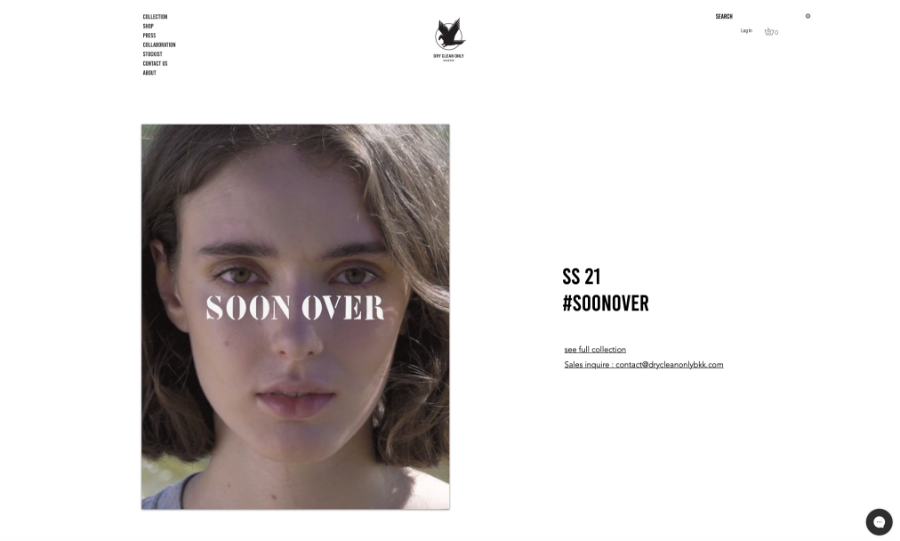
Shop at these Thai eco-friendly fashion brands
Dry Clean Only
Having bloomed from a little store in Chatuchak market, Dry Clean Only is now globally-known for turning neglected items into eccentric pieces.
drycleanonlybkk.com
Standard Archives
With the less-is-more approach, this shop designs most pieces to match your lifestyle. They’re ideal for you to build your capsule wardrobe.
sastore.co
SackItem
If you like Freitag products, then these one-of-a-kind upcycled bags will be right up your alley.
sackitem.com
Folkcharm
Farm to table? Try farm to fashion. Every piece is made by local craftswomen and with organically-grown cotton.
folkcharm.com
Repleat
This brand gives new life to discarded material from umbrella manufacturers, turning polyester taffeta into gorgeous lightweight bags.
repleatbag.com















